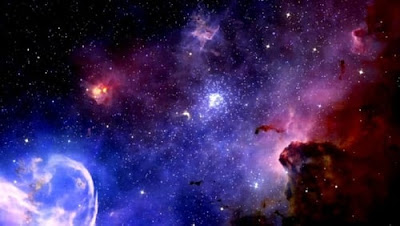Researchers Simulate 8 Million Universes
Scientists saw the first hints of the effect dark matter has on the universe decades ago, but there’s still a great deal we don’t know about it. It’s difficult to determine the nature of dark matter interactions because we only have the one universe to observe. That’s why researchers from the University of Arizona created 8 million universes with varying conditions inside a supercomputer.
Our current understanding of the role played by dark matter is limited, but most researchers agree on the basics. After the Big Bang, the nebulous material we know as dark matter began clumping together into clouds known as dark matter haloes. Since dark matter makes up most of the matter in the universe, these haloes pulled in hydrogen atoms with the force of gravity, causing them to coalesce into the first stars. Many scientists believe that dark matter continues to form the backbone of galaxies to this day.
Also see : 4 cheap wordpress hosting services 2020
In an effort to learn more about the mechanisms at work, astronomer Peter Behroozi from the University of Arizona used the school’s supercomputer to play god and create millions of simulated universes. Each of the 8 million universes had a unique set of physical constants to help researchers understand how dark matter affects regular matter over time. By comparing these result to the real universe, we can learn which rules match up with reality. The team calls this the “UniverseMachine.”
The University of Arizona Ocelote supercomputer has 336 nodes, each with two 28-core CPUs and 192GB of working memory. There’s also a separate large memory node with 2 terabytes of RAM for handling especially large data set. Behroozi kept 2,000 Ocelote CPU core busy non stop for over three weeks to simulate all those universes.
We lack the technology to simulate every aspect of a whole universe — simulating a single galaxy accurately would take more computing power than Earth could muster in a hundred years. So, Behroozi and his colleagues focuse on two of the most important properties in astronomy: the mass of stars and the rate at which new stars form.
Little by little, the researchers honed in on properties that made their simulations more like the real thing. The finding could force a rethink of how dark matter affects star formation, too. According to Behroozi, denser dark matter in the early universe seemingly did not negatively impact star formation rates as expected. In fact, galaxies of a given size were more likely to form stars at a high rate for much longer.
Behroozi is excited about what this model could teach us in the futures. Soon, the team plans to expand the variables simulated in the UniverseMachine, including how often stars die in supernovae and how dark matter affects galaxy shapes.

Comments
Post a Comment